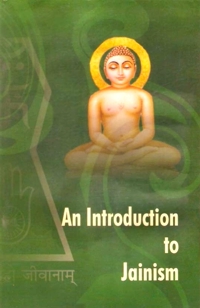Indian culture can be categorized into two broad groups:
1. Brāhmaṇa (Vedic) culture
2. Śramaṇa culture
The philosophical schools of Mīmāṅsā, Vedāṅta, Nyāya and Vaiśesika fall into first category. The philosophical schools of Jain, the Buddhist and the Sāṅkhya belong to the Sramaṇa culture.
The existence of Jain Religion has been since pre-historic era.
According to the Jain tradition, there appear twenty-four Tīrthaṅkaras in every semi-cycle of time. Lord 'Ṛṣabha' was the first Tīrthaṅkara. The period of 'Rṣabha cannot be ascertained in terms of historical calculations. Traditionally, Lord 'Ṛṣabha' was the sponsor of the present Age and the founder of Human Culture. His life-sketch has been described in detail in Srīmad Bhagavata. He was the first King of the era. For a long period, he ruled people and was the pioneer of social and political systems. After entrusting the social and political responsibility to his successors, he became an ascetic. He undertook severe penances and attained the Right Knowledge. He became an omniscient. He was the first propounder of the doctrine of soul. He sponsored the Tīrtha and became Tīrthaṅkara. Thus In the linage of 24 Tīrthaṅkaras, the first Tirthaṅkara was Lord 'Ṛṣabha and the 24th Tīrthaṅkara was Lord Mahāvīra. The twenty-two Tīrthaṅkaras belonged to pre-Historian Era. The 23rd Tirthaṅkara Pārśva and the 24th Tīrthaṅkara Mahāvīra were historical persons. Tīrthaṅkaras were self-enlightened and showed the path of enlightenment to others. Every one of them was the master of self-consciousness. Being self-enlightened, every one of them never were followers of others. This is why a Tlrthaṅkara is the pioneer of religion. He is also termed as Jina, Vitarāga, Arhat, Sarvajña etc.
Lord Pārśvanāth, the 23rd Jain Tirthaṅkara, had lived in the 8th century BC. This was the time when the Upanisads were being composed.
The 6th century BC was an epoch making century. Some of the legendary persons like Lord Mahāvīra and Buddha (in India), Laotse and Confucius (in China), Pythagoras (in Greece) were born in this century.
Some of the scholars opine that Mahāvīra took birth to refrom the then existing conventional religion. But this is not true, it is in fact a misconception. Mahāvīra was actually an independent religious leader. Undoubtedly, he refuted many of the perverted beliefs of the prevalent religion and stressed on spirituality, the heart of religion. He was born to the parentage of Ksatriya, Siddhārta and Queen Triśalā on Caitra Śuklā 13 (30th March) 599 BC at Ksatriya Kunda Grama which was a suburb of Vaishali Republic. At the age of 28, his parents passed away.
After the demise of his parents, Mahāvīra aspired to be an ascetic. He sought permission of his elder brother & his uncle. Both of them counselled him to wait for some more time. Mahāvīra could not disregard the wishes of his family members. He stayed with the family for next two years, but he continued his spiritual practices.
Then he renounced the household life and went to the nearby forest where he got himself initiated as a 'Sramana' (ascetic). He lived the life of a householder for thirty years and that of a sādhaka (ascetic in pursuit of spiritual beatitude) for twelve and a half years. His period of sādhnā came to an end with the attainment of Kevaljñāna (omniscience). Lord Mahāvīra now came to perceive and know the whole of reality directly. His consciousness became devoid of any kind of obstruction. The dividing line between the knower and the known had disappeared. He had a direct perception of his own self as well as the entire world. Then he lived and worked in the midst of people and showed them the way to peace.
Lord Mahāvīra breathed his last in 527 BC while sitting in the paryaṅkāśana (a yogic posture of sitting cross-legged), practising meditation on the soul, on the 30th day (dark night) of the month of Kārtika (November). That day has become the Jyoti Parva (the yearly festival of "Dīpāvalī)".
 Sadhvi Vishrut Vibha
Sadhvi Vishrut Vibha

